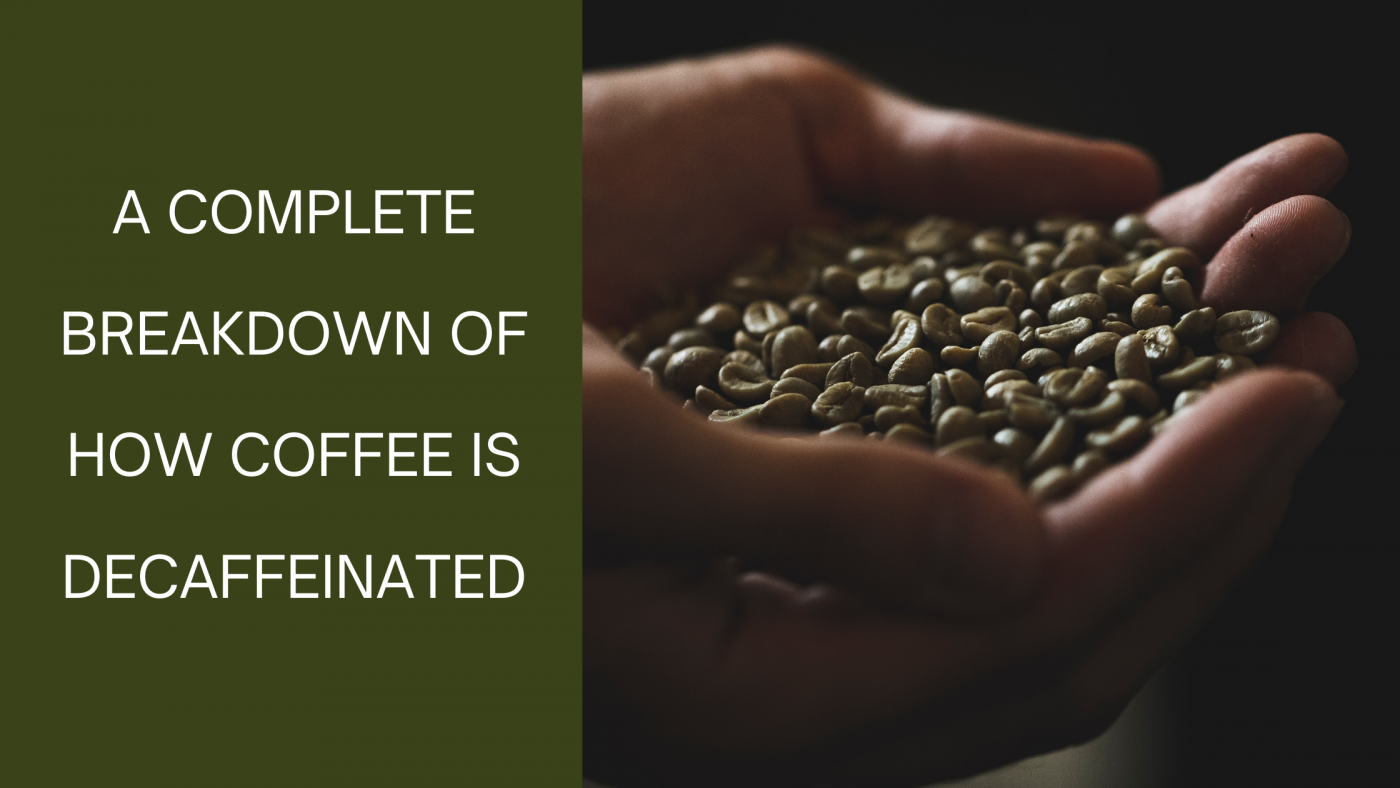coffee knowledge
A Complete Breakdown of How Coffee Is Decaffeinated
In a previous post, we discussed how coffee obtains different flavour notes. But how exactly does one extract caffeine from the bean? While many of us enjoy the flavours of coffee, not everyone can handle the effects of caffeine found in a regular cup of coffee. Many prefer decaffeinated coffee because they want to enjoy the flavours without the effects. But the process to remove the caffeine requires a lot more science than you realize. So you might be asking yourself, how is coffee decaffeinated?
Decaf Coffee is a Science
Coffee companies themselves cannot decaffeinate coffee beans because chemistry is involved. Certified specialists from a decaffeination company such as Swiss Water are trained to strip the caffeine from the bean. Especially because it is time-consuming, done in bulk, and with special solutions that require the attention of a trained specialist. Timbertrain sources our decaf coffee beans from Swiss Water, a specialist decaffeination company to ensure the best quality decaf coffee beans.
It would be wrong to assume that it’s easy for any coffee company to decaf our coffee beans. It is a lot more complex because the process of decaf starts before roasting meaning the bean is green.
Different Methods to Decaf Coffee
There are several methods to decaffeinating coffee but the most used method is to wash or soak the beans in a liquid substance such as methylene chloride or ethyl acetate. Methylene chloride is typically used to strip paint and grease. But ethyl acetate is an element of natural fruit created from an ether acid. This element is also used in vinegar.
First, the beans soak in water and then coated in a solution containing either one of these substances. Through this process, the caffeine is extracted from the bean. Then the water containing the solution is used over and over again until it mirrors the flavour of coffee and compounds without the caffeine or solutions. Think of the solution by the end stages like a marinate for the bean and that it’s coating the beans with the flavour without the caffeine content because that marinate is also drawing out the caffeine.
The Swiss Water Method
Another method is the unique process of decaf beans with the Swiss Water method. This is how our beans are decaffeinated. How do they decaf coffee? The Swiss Water method is an innovative, 100% chemical-free decaffeination process removing caffeine for coffee roasters around the world.
The Swiss Water Process uses elements of water, temperature, and time to create an aromatic decaf coffee starting with green beans. When they arrive at the Swiss Water facilities the beans have been washed, cleaned, and hydrated preparing them for caffeine removal.
Their internally-developed Green Coffee Extract (GCE) is introduced to the beans and caffeine removal begins. Caffeine ventures out on its own, away from the coffee beans into the GCE until the ratio of soluble compounds in the GCE to the compounds in the coffee reach the point of equilibrium. Caffeine and GCE flow continuously through their proprietary carbon filters until all the caffeine is trapped and separated from the GCE. Then the GCE is refreshed so that it can be used again and again to remove more caffeine. As you can tell, the decaf process to extract caffeine from the bean is similar but each method is different.
For the next 10 hours, the Swiss Water team continuously monitors the process and caffeine levels in each batch they are decaffeinating. They track time, gauge temperature controls, and check the levels on the GCE flow. The result is 99.9% caffeine-free coffee. It’s important to note that while the previous methods decaffeinate coffee they do not 100% decaffeinate them.
Finally, the decaffeinated green beans are shipped to the roasters and the specialty coffee brands Swiss Water company works with, such as Timbertrain, so that the beans can be turned into something special. Amazing coffee without caffeine from unique places all over the world and into your cup.
